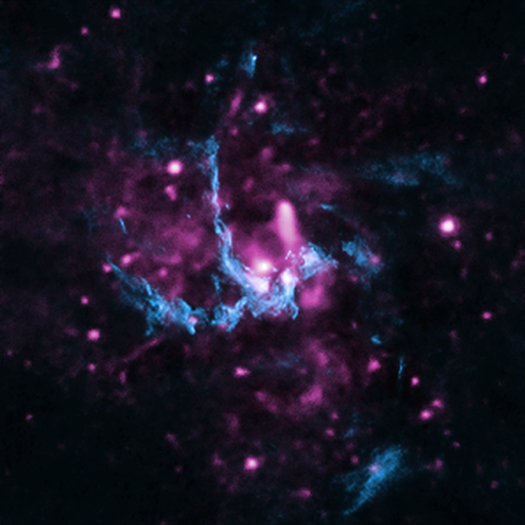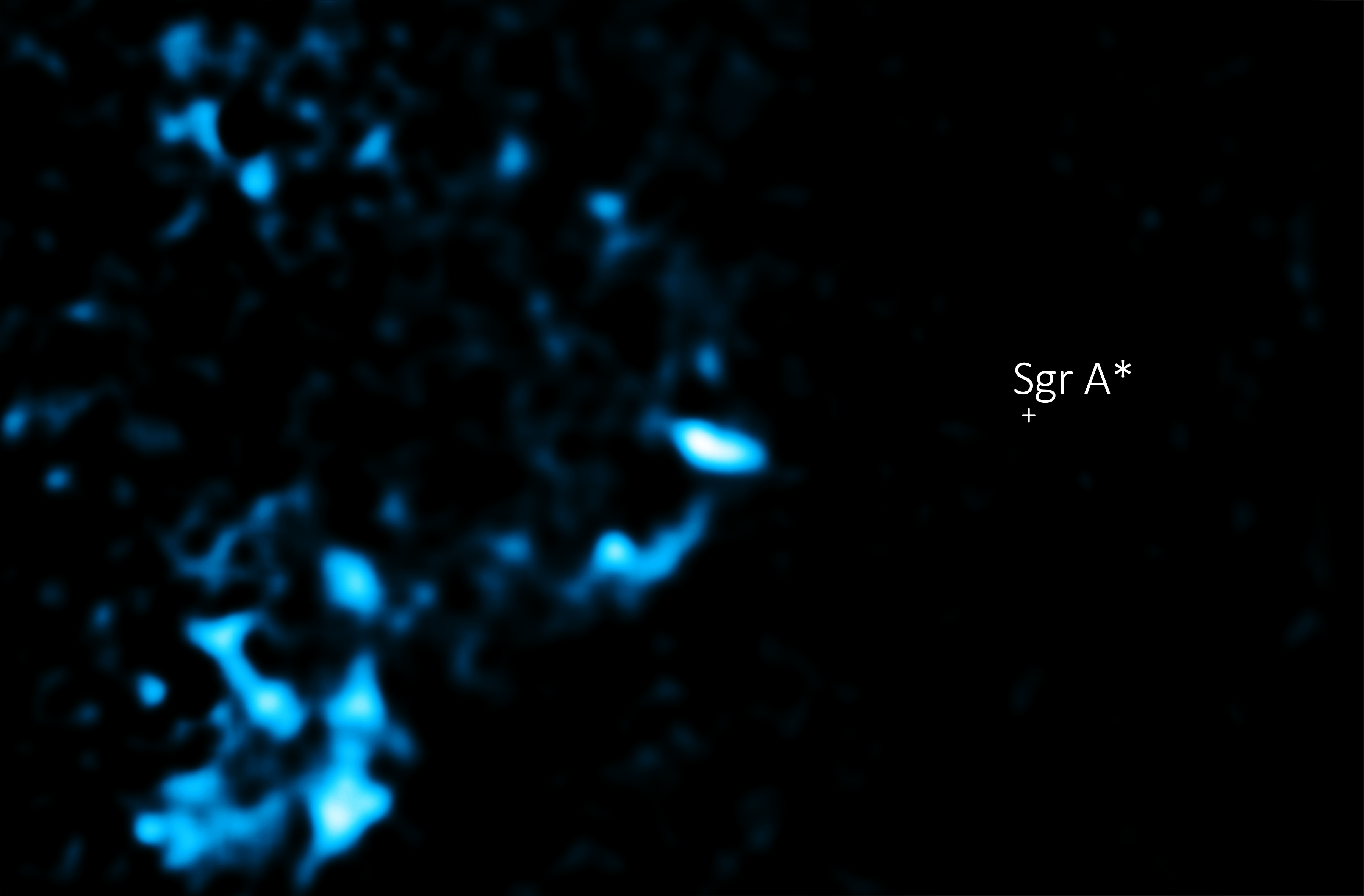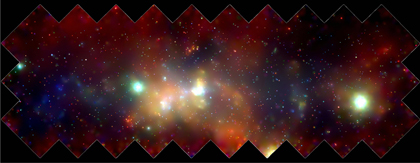Submitted by chandra on Wed, 2013-11-20 23:50
We are delighted to welcome a guest blog post from Zhiyuan Li, who led the work explained in our latest press release describing the best evidence yet for a jet from the supermassive black hole in our galaxy. Zhiyuan obtained his PhD at UMass/Amherst and did a postdoc at the Smithsonian Astrophysical Observatory. He went on to a Assistant Reseacher position at UCLA, where he worked with Prof. Mark Morris on the Sgr A* jet. He is currently a Professor of Astronomy at Nanjing University in China.
Today most astronomers believe that a supermassive black hole (SMBH), which weighs several million times more than the Sun, lurks at the very center of our Milky Way galaxy. The existence of such an entity was more just a speculation some 40 years back, when the two British astrophysicists, Donald Lynden-Bell and Martin Rees, first proposed the idea. Lynden-Bell and Rees suggested one particular observational test: "Very long baseline interferometry may soon be possible…to determine the size of any central black hole that there may be in our Galaxy" -- and they were right. There soon came the memorable discovery by Bruce Balick and Robert Brown, who in early 1974 used the Green Bank interferometer to find a compact radio source at the expected position. The source is now widely known as Sagittarius A* (Sgr A*) and accepted as the radio counterpart of the putative SMBH. (Most astronomers would use Sgr A* to denote the SMBH, and we do so below.)
Submitted by chandra on Wed, 2013-11-20 14:38

New evidence has been uncovered for the presence of a jet of high-energy particles blasting out of the Milky Way's supermassive black hole. As outlined in the press release, astronomers have made the best case yet that such a jet exists by combining X-ray data from NASA's Chandra X-ray Observatory with radio emission from the NSF's Very Large Array (VLA).
Submitted by chandra on Thu, 2013-10-24 10:52

Researchers using NASA's Chandra X-ray Observatory have found evidence that the normally dim region very close to the supermassive black hole at the center of the Milky Way Galaxy flared up with at least two luminous outbursts in the past few hundred years.
This discovery comes from a new study of rapid variations in the X-ray emission from gas clouds surrounding the supermassive black hole, a.k.a. Sagittarius A*, or Sgr A* for short. The scientists show that the most probable interpretation of these variations is that they are caused by light echoes.
Submitted by chandra on Wed, 2013-08-28 11:00
We are delighted to welcome Q. Daniel Wang as a guest blogger today. Daniel is the first author of a paper dissecting the X-ray-emitting gas around the center of our Galaxy, the subject of our latest press release. He is a professor in astronomy at University of Massachusetts Amherst. He was the Principal Investigator of the first large-scale Chandra and Hubble surveys of the Galactic center to explore various components of this exotic ecosystem. He recently enjoyed a four-month stay at University of Cambridge as a Beverley Sackler Distinguished Visiting astronomer, where much of the work reported in the paper was finished.
It has been known for a while that almost all massive galaxies contain a giant black hole at their centers. Most of such black holes, including the one at the center of our own Galaxy, are, however, far dimmer than quasars typically seen in the early universe. This dimness cannot simply be explained by decreasing amounts of material that the black holes could capture. Have the black holes lost their appetite? Or do they just swallow everything that is captured without much radiation? Many theories have been developed. But direct observational tests are hard to come by.
Submitted by chandra on Mon, 2009-06-01 09:53
One of Chandra's most iconic images is that of the center of our Galaxy. We should say, more accurately, that this image is just a small piece of Milky Way's center. This image - which stretches some 900 light years in one direction and 400 light years in the other - is actually a montage of 30 separate Chandra images that have been stitched together to create this stunning X-ray tableau. Even with all of that data, this image still only represents a small fraction of the plane of the Milky Way, which stretches some 100,000 light years across (again, compared to just 900 light years in our image.) But even in that relatively small space, we see how amazing our Galaxy is. There's a supermassive black hole and hundreds of other objects, including neutron stars, smaller black holes, stars and more.

But when do we get a full picture of the Milky Way? The answer is we don't. Since our Solar System is embedded within our Galaxy, we never get a real astronomical image of what it looks from the outside as produced by a telescope. (What we see when we are "looking" at a complete picture of the Milky Way is an artist's representation - or another spiral galaxy that is standing in as its stunt double.)
Submitted by chandra on Wed, 2009-04-29 14:35
An extremely deep Chandra X-ray Observatory image of a region near the center of our Galaxy has resolved a long-standing mystery about an X-ray glow along the plane of the Galaxy. The glow in the region covered by the Chandra image was discovered to be caused by hundreds of point-like X- ray sources, implying that the glow along the plane of the Galaxy is due to millions of such sources.
Pages